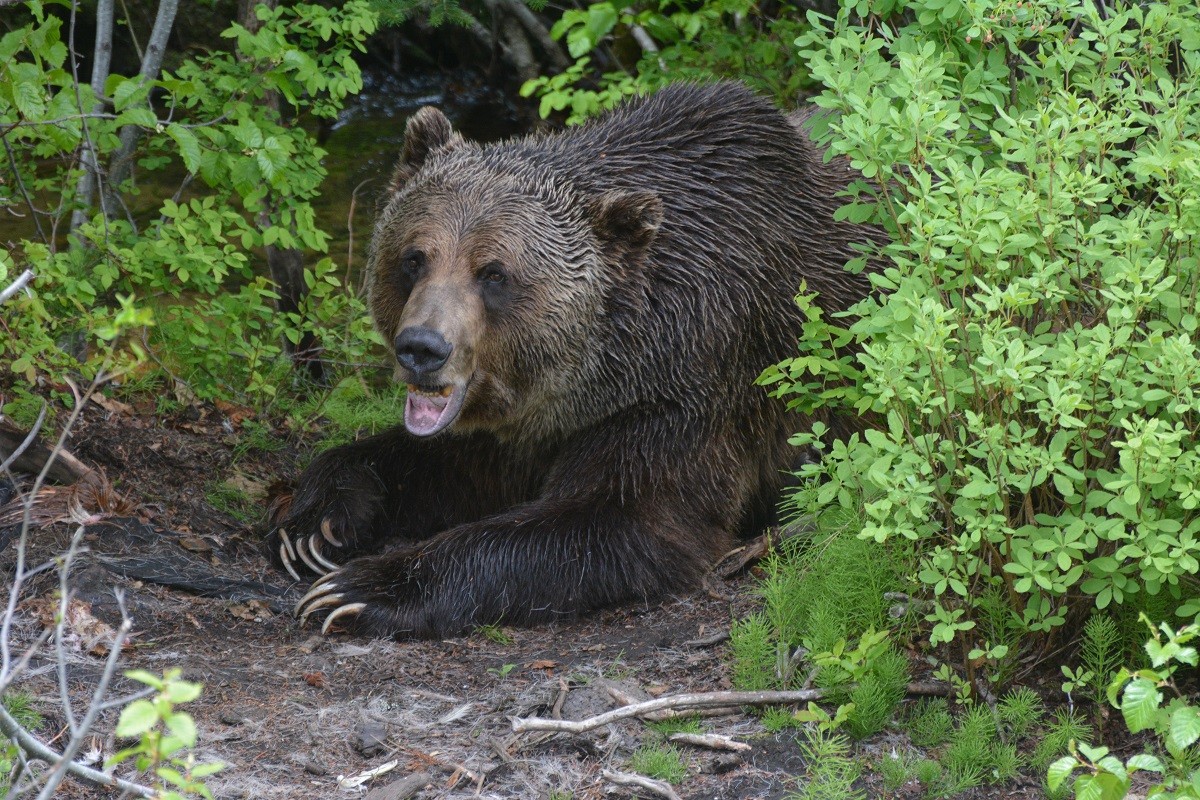He’s massive! His yellow claws are as long as my fingers and tap the ground as he saunters beside me in that carefree way only the king of the forest can. His chestnut brown fur still wet from his morning plunge in the pond glistens in the sun. Even though he is only metres away, and the adrenaline surges through my veins, I don’t panic. It’s Boo, the charming grizzly who resides safely in his enormous refuge at the Kicking Horse Mountain Resort near Golden B.C. While I learn about his life on the Ranger Assist Program (RAP), he goes about his day as happy as a king.
Boo was born in the Caribou Mountains in the early 2000s. Sadly an idiot with a gun poached the mother bear leaving the 5-month-old cubs to fend for themselves. Back then, grizzly bears were seen as a species that could not be rehabilitated, and the cubs’ age was against them. Boo and his brother were rescued by a wildlife refuge and eventually made their way to Golden in 2003. Unfortunately, the brother died the first winter in hibernation due to an intestinal problem, so Boo, like all male grizzly’s, has lived a solitary life in his 20-acre mountain oasis.
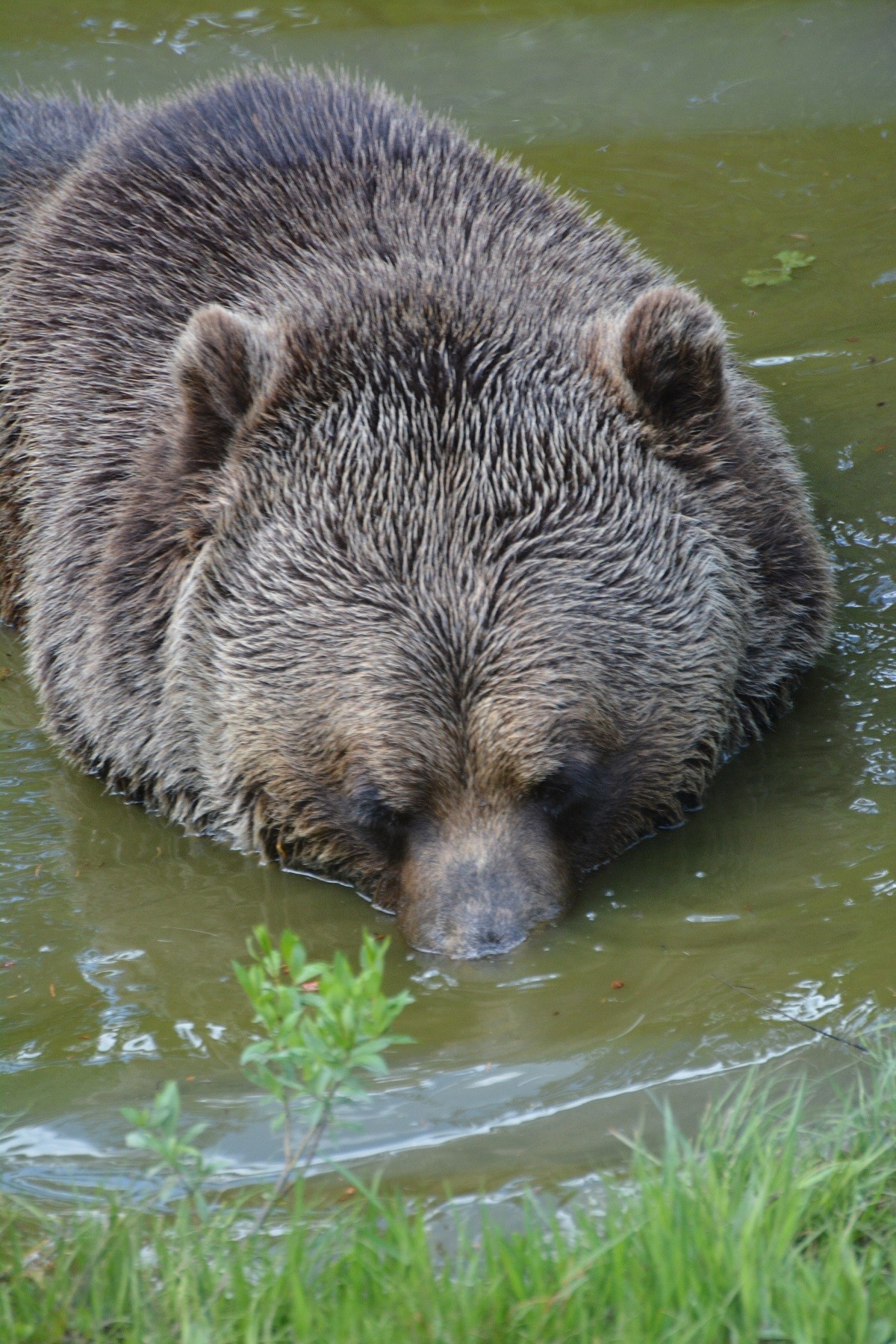
Boo soaks in his pond to cool down and to get reprieve from the pesky flying insects! Photo Joanne Elves
It is an oasis. Forget about five stars; he’s got the entire galaxy! There is mountain freshwater, a pond for mud baths (to keep the bugs away), a variety of landscapes, meals delivered to his door, room to play, to keep fit and to periodically hunt like a bear. Squirrels and small rodents should be very bear aware!
As I talked with Cat Cowan, the refuge manager, the assistant ranger Marissa Watson closed off gates to the feeding area so Boo wouldn’t wander in while she worked. She tried to hide apples in the pond, yams in the trees and even dug a hole to hide a dead chicken under a layer of rocks. As a tag-along to the ranger, I was able to wander the fence with her and watch Boo’s movements. My camera always at my nose nearly cost me some footing but it was worth it.
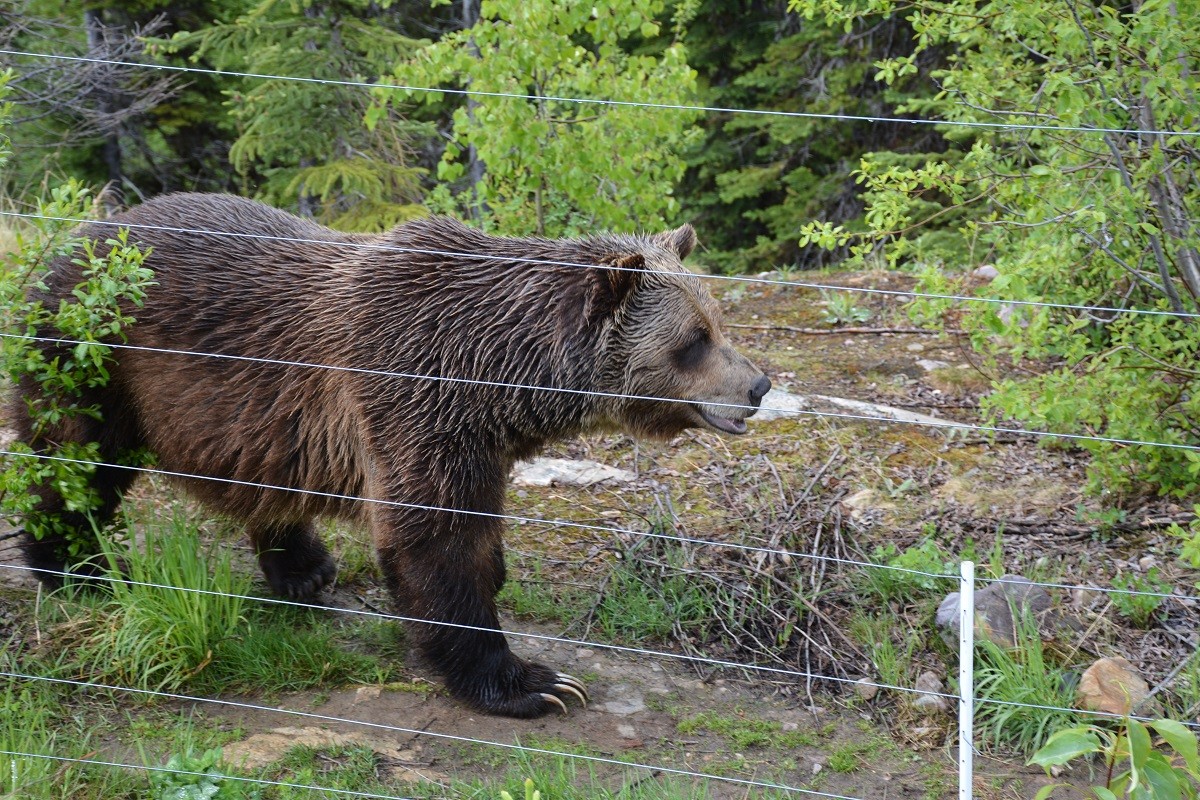
Boo saunters along the fence line without a care in the world. Anyone without a fence between a bear and themselves should be very aware of those claws! Photo Joanne Elves
As we watch Boo use those claws to retrieve the apples bobbing in his pond, Cat says grizzly’s sense of smell is seven times better than a bloodhound. Just then his nose goes up, his nostrils twitch and he bee-lines (or is that bear-lines?) straight to the tree where the yams were hiding. After a few minutes of digesting his fruit and veggies, his nose goes up again and he’s on the move. Marissa may have struggled to pile the rocks on the chicken carcass, but Boo flipped them away like ribbons on a present.
“We create a diet that replicates what would be happening in the wild,“ says Cat. “If he is supposed to be foraging in the valley, we bring in food that matches that caloric intake. As the season changes, so do his needs. When he comes out of hibernation he’s looking for 20,000 calories a day. By the time fall rolls around, he is bulking up for the long sleep consuming upwards of 50,000 calories a day.” Roadkill and different meat “beef” up his menu that includes a variety of plant foods such as corn on the cob, berries, tree fruits, seeds and nuts.
(Just to gross you out, 50,000 calories is almost 100 Big Mac meals – per day.)
For the RAP tour, up to four in a group can be included but I had the rangers to myself. As they went about their morning routine, I was either dogging them and peppering them with questions or left to watch Boo. I found out he doesn’t like it when bikers come along the fence wearing helmets, that he escaped twice (probably looking for love) but came back both times, and that he hibernated in a den he built last winter.
That last fact shouldn’t be surprising, but he was brought into captivity before he had the chance to build his own den in the wild. He instinctively found the perfect spot within his sanctuary, dug the tunnel and den, collected his bedding material, rolled it into large tufts and pushed it all into place. In all the years he has lived there, that was the first time he didn’t stay in the winter holding area.
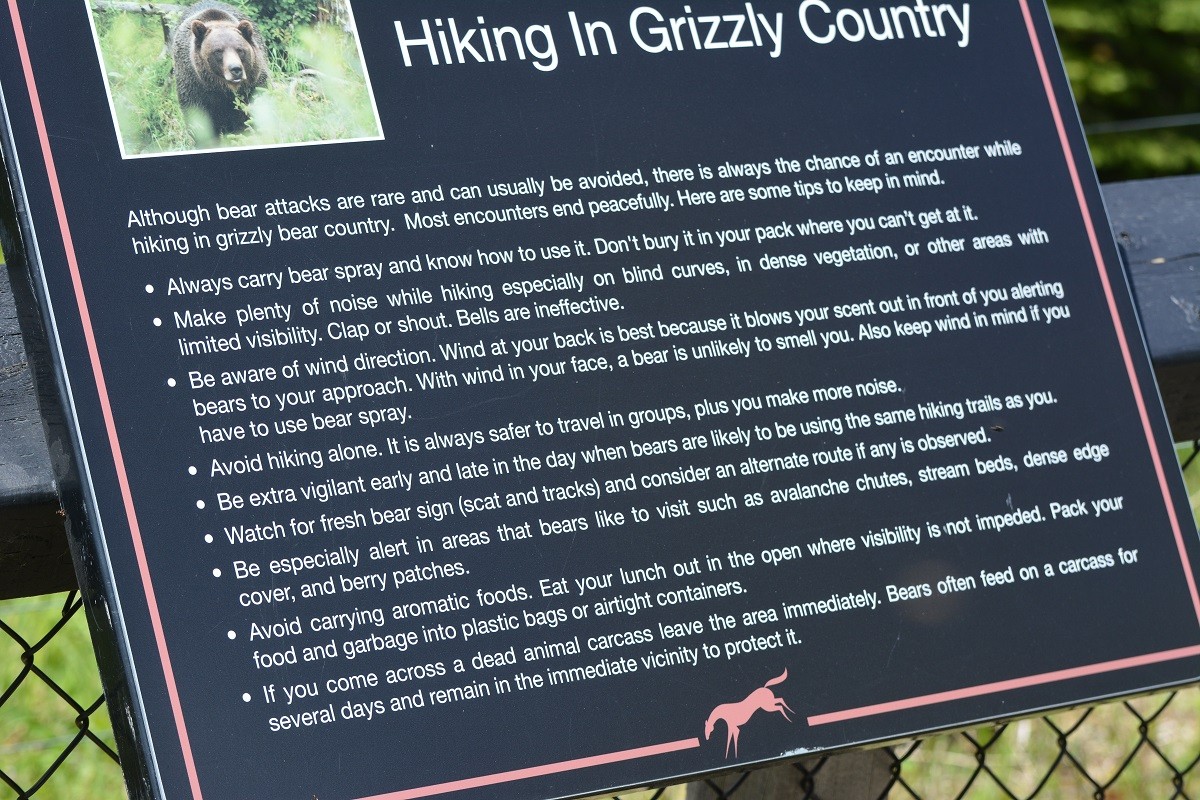
Be Bear Aware when Hiking Photo Joanne Elves
Kicking Horse offers two different grizzly bear experiences. A visit to the bear refuge includes the Interpretive Tour offered several times a day except at 1 pm when he is known to nap. Guides take groups along the fence to locate Boo and use his daily activities to explain how bears live in the wilds. It’s a perfect opportunity to teach children why bears are important and why they should be respected.
The RAP is offered twice a day at 9 am and 3 pm. The morning tour was what I experienced. At 10 am when the general public arrive, RAP participants can either join the interpretive program or linger as long as they like. The afternoon RAP participants take in the last Interpretive tour, then join the rangers for the afternoon procedures and learn more about Boo.
Boo is 19-years-old now and is expected to live into his 30s. He seems to enjoy the attention from the onlookers on the other side of the fence which is wonderful for us all. As we admire those claws, his massive feet, his shimmering coat and his endearing smile, he educates us. We need to know that bears do not set out to terrorize and destroy. They deserve to be left alone and admired as the king of the forest.
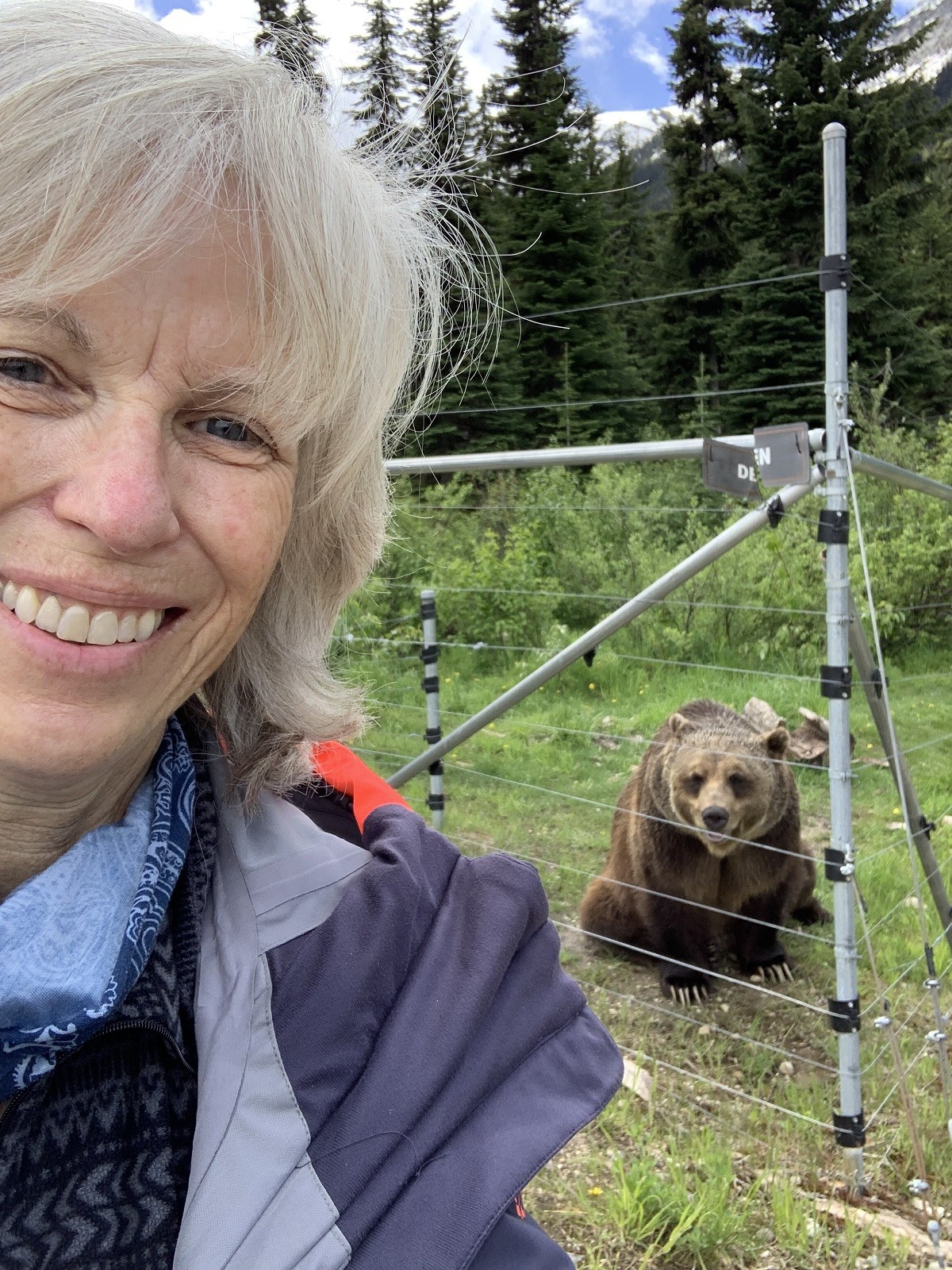
This is as close as I got to Boo. The rangers don’t get any closer either. Photo Joanne Elves

